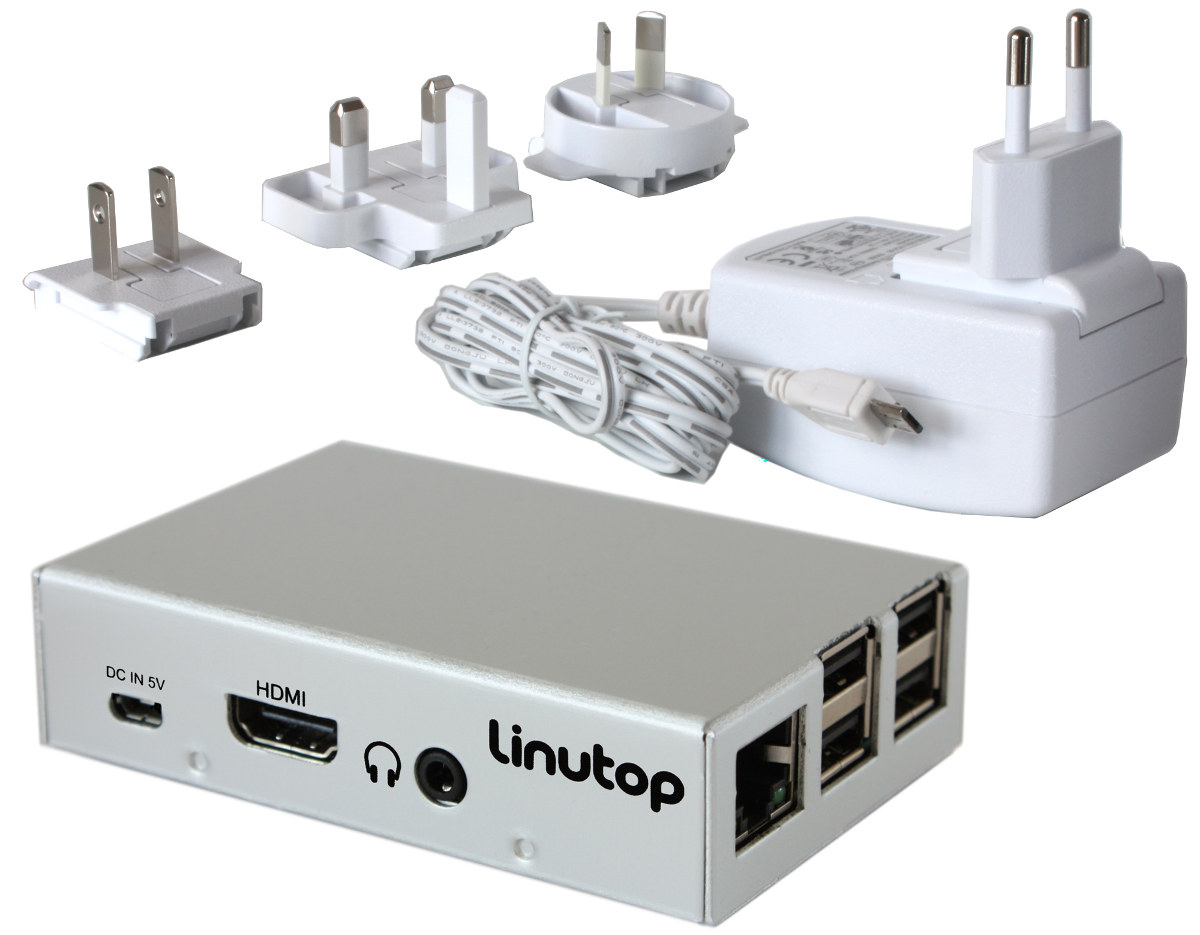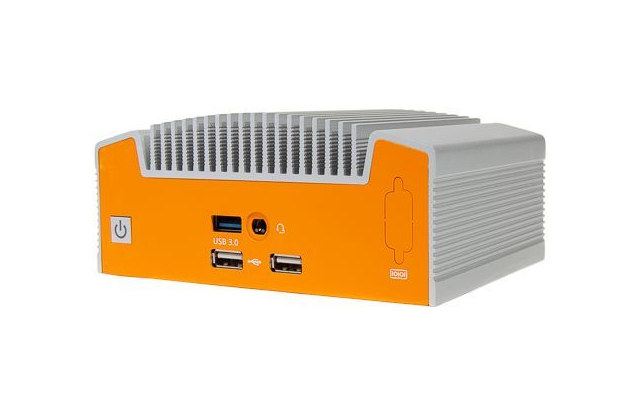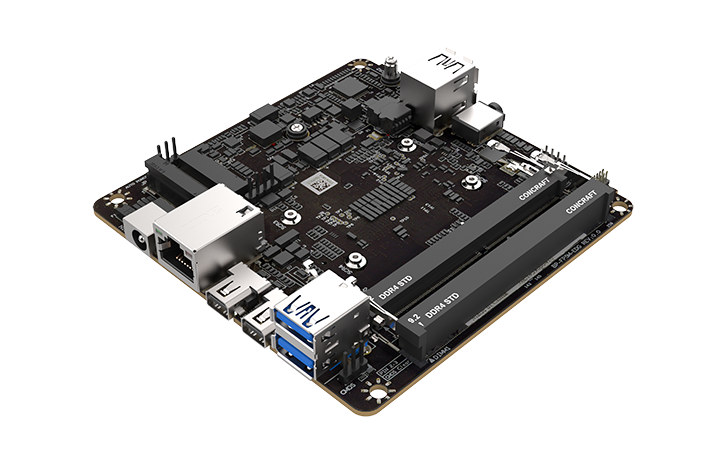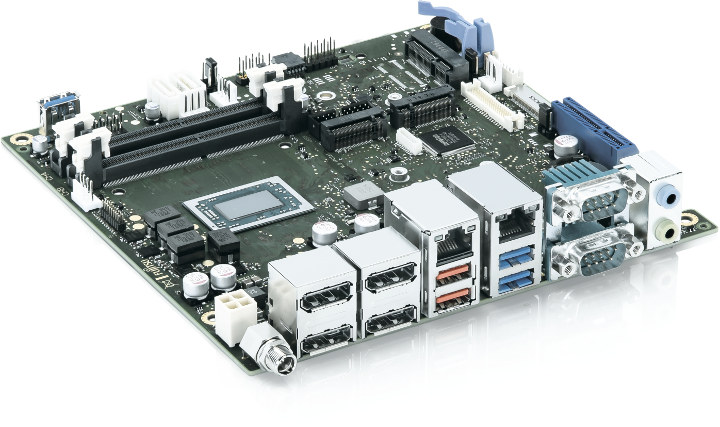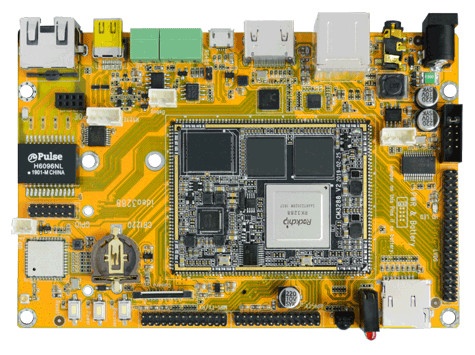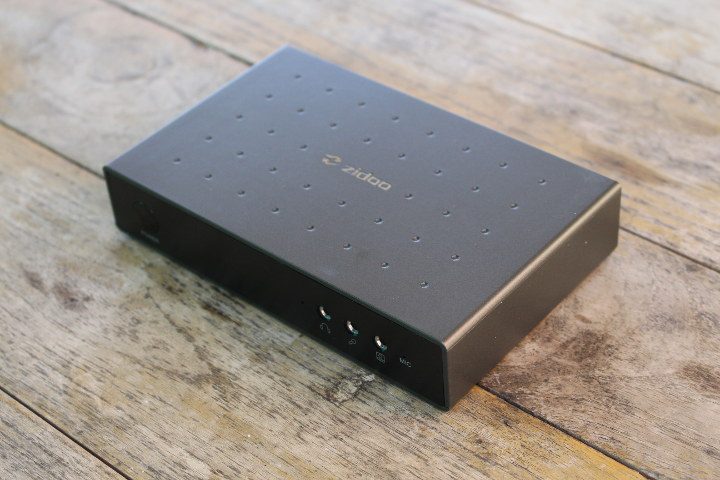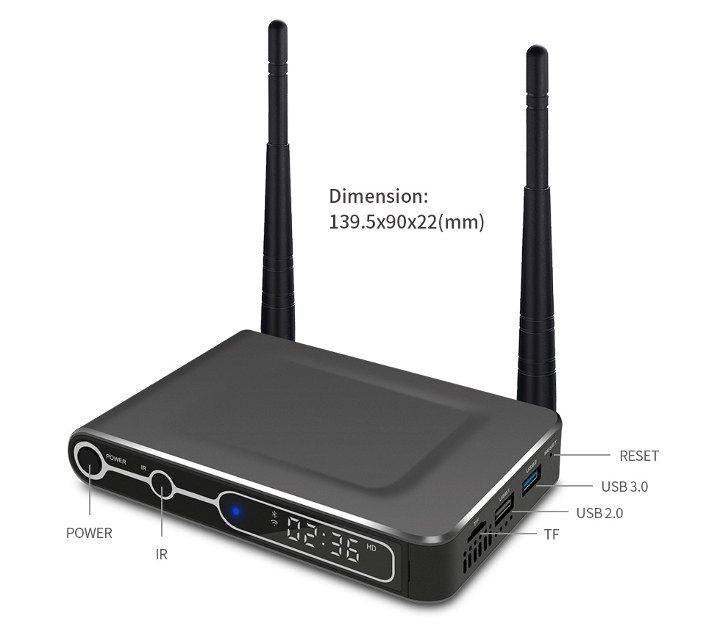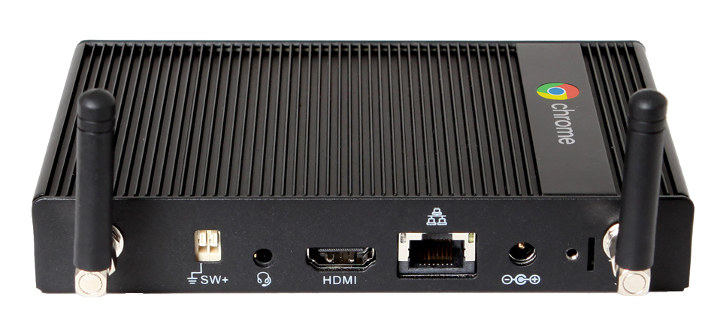Linutop is a French company offering software and hardware solutions for digital signage and secure web kiosks, and this morning we received an email about Linutop OS now working on Raspberry Pi 4 board. Linutop OS is a Xubuntu (x86) or Raspbian (Arm) based OS using XFCE desktop environment, and shipping with the company’s Linutop Kiosk program used to setup a web kiosk or a digital signage player controlled via Linutop TV Digital Signage CMS (Cloud or self-hosted). The kiosk/DS software and the content management system (CMS) are not open-source, but there are free demo versions. If you want to install the full version it will cost you 79 Euros, and a self-hosted license for the CMS goes for 196 Euros. The company also offers Arm and x86 digital signage players based on Raspberry Pi or UP Board SBCs. Linutop XS/XS3 Linutop XS is based on a Raspberry Pi 2 […]
OnLogic AMD Ryzen Embedded Mini PCs Launched for $565 and Up
OnLogic Announces Shipping of 2 New Mini-PCs OnLogic has just announced the availability of two AMD Ryzen Embedded powered mini PCs designed for industrial uses. The ML100G-40 is a fanless industrial mini PC, while the MC510-40 is an actively cooled mini PC Overview The ML100-40 has the option of having either a Ryzen Embedded R1505G or a V1605B, and comes with 3 video output ports and dual LAN ports. The system is equipped with 4 GB RAM, 32 GB M.2 SSD by default, and offers a wide range of I/O ports on the rear panel. The MC510-40 is a low-profile fanned industrial Mini-ITX carrying an AMD Ryzen Embedded V1605B processor, with Radeon Vega 8 GPU. The actively cooled Mini-PC has 4 ports for independent displays, M.2 storage, and max 32 GB memory. ML100-40 Specifications and Base Price Ryzen Embedded R1505G $565.00 Ryzen Embedded V1605B $685.00 The ML100-40 can be fitted […]
AMD Goes Low Power with 6W Ryzen Embedded R1102G & 10W Ryzen Embedded R1305G Processors
If you’d like a relatively low cost (~$200) mini PC featuring a recent processor with a TDP less than 10W your only options up to this point were models with Intel Cherry Trail, Apollo Lake or Gemini Lake processors. AMD launched some 12W-25W processors with Ryzen Embedded V1000 series and Ryzen Embedded R1000 series for embedded systems over the course of the last two years. But the company is now providing lower cost and lower power versions of their Embedded R1000 family with Ryzen Embedded R1102G and Ryzen Embedded R1305G processors with a TDP of respectively 6W and 10W. Ryzen Embedded R1102G & R1305G Key Specs The new processors have many the same features as the previous R1505G & R1606G models but at a lower TDP and performance (frequencies): Ryzen Embedded R1102G – 2-core/2-thread @ 1.2 GHz / 2.6 GHz (Turbo); 3x CU Radeon Vega 3 graphics cores @ 1.0 […]
Kontron Launches AMD Ryzen Embedded Mini-ITX Board for Graphics Applications
We’ve seen several AMD Ryzen Embedded boards launched over the last couple of years, but the only one we covered here that happens to follow the mini-ITX form factor was iBASE MI988 motherboard powered by a choice of Ryzen Embedded V1000 processors. But there are others including Sapphire IPC-FP5V 10GbE embedded mini-ITX motherboard, and Kontron has just announced the D3713-V/R mITX motherboard with AMD Ryzen Embedded V1000/R1000 processor and aimed at “demanding graphics applications” such as kiosks, infotainment, digital signage, professional casino gaming systems, medical displays, as well as thin clients and industrial PCs. Kontron D3713-V/R mITX specifications: SoC (one or the other) AMD Ryzen Embedded V1202B dual-core/quad-thread Zen processor @ 2.3 GHz / 3.2 GHz (Boost frequency) with RADEON VEGA 3 graphics; 12W to 25W TDP AMD Ryzen Embedded V1605B quad-core/octa-thread Zen processor @ 2.0 GHz / 3.6 GHz (Boost frequency) with RADEON VEGA 8 graphics; 12W to 25W […]
Boardcon Idea3288 Android SBC is Made for Digital Signage, Smart PoS, and Vending Machines
Boardcon Announces the Idea3288 SBC Boardcon Idea3288 targets the commercial market with a variety of applications for its latest SBC, utilizing a Rockchip 3288 CPU module. The company says the Idea3288 is customizable for whatever commercial application that can be had, such as digital displays, vending machines, intelligent POS, automotive, IoT, and even access control systems. Idea SoC RK3288 and Interfaces The SBC is comprised of a Rockchip RK3288 quad-core Arm Cortex A17 processor with a Mali-T764 GPU, 2GB RAM, and 8GB eMMC flash. The interfaces include GbE, mDP, HDMI, 3x USB2.0 Host ports, one USB OTG port, audio, battery, MIPI DSI/CSI, UARTs, RS485, CAN, POE, Micro SD, PCI-e (for 4G modem), M.2 slot (for SSD), SIM slot, and more. The SBC is made up of a carrier board and a CPU module The SBC runs Android 7.1.2 operating system and is built to handle 4K video playback. The Idea3288 […]
Zidoo M9 Mini PC Review – Part 1: Unboxing & Teardown
Over the years, Zidoo has made TV boxes for the consumer market, and digital signage players for businesses. The recently announced Zidoo M9 aims at both markets, plus other applications such as IoT, robotics, and artificial intelligence. Zidoo M9 is either sold as a board or a complete TV box reference design with a case, as it exposes all the usual ports of a TV with HDMI, USB, and Ethernet. But you can do more with internal connectors for cameras, PCIe interfaces, SIM card slot, MPI DSI and eDP connectors, and so on. The company has sent me a review sample, so let’s first check out the accessories provided with the box, and have a look into the hardware design today, before testing the Android firmware in the second part of the review. Zidoo M9 Unboxing The package makes it clear Zidoo M9 “mini PC” looks like a TV box, […]
Rikomagic MK25 Amlogic S922X TV Box Supports Digital Signage Features
Here’s another Amlogic S922X TV box. Rikomagic MK25 TV box & digital signage player comes with up to 4GB RAM and 32GB storage, HDMI 2.0 output, Gigabit Ethernet, and dual-band WiFi 5. Rikomagic MK25 specifications: SoC – Amlogic S922X hexa-core big.LITTLE processor with 4x Arm Cortex A73 cores @ up to 2.0 GHz, 2x Arm Cortex A53 cores, Arm Mali-G52MP6 (6EE) GPU; 12nm manufacturing process System Memory & Storage Configurations 2GB LPDDR4 RAM + 16GB eMMC flash, microSD card slot up to 32GB 4GB LPDDR4 RAM + 32GB eMMC flash, microSD card slot up to 32GB Video Output – HDMI 2.0 up to 4K @ 60 Hz, 3.5mm AV port (composite) Video – AVE-10 engine with 4K UHD H.265/VP9/AVS2 video decoding up to 60 fps, Dolby Vision, Advanced HDR10, HDR10+, HLG, and PRIME HDR high-dynamic range support Audio – Optical S/PDIF, digital audio via HDMI, stereo analog audio via 3.5mm […]
AOPEN Chromebox Mini is Designed for Digital Signage and Kiosks
Most ChromeOS devices are designed for either the consumer or educational markets, but Google’s operating system can also be used for commercial applications such as digital signage. A cheap way to set up a ChromeOS based digital is to get a ChromeBit (around $100 used) and install one of the Digital Signage apps for the OS. But as I checked out Linux 5.4 changelog, I came across AOPEN Chromebox Mini (codename Fievel) powered by a Rockchip RK3288 processor and described as an “enterprise-ready” Chromebox for 24/7 operation as digital signage or kiosk. AOPEN Chromebox Mini specifications: SoC – Rockchip RK3288C quad-core Cortex-A17 processor @ up to 1.8GHz with Arm Mali-T764MP GPU clocked at up to 600 MHz System Memory – Dual-channel 4GB LPDDR3 Storage – 16GB eMMC 5.0 flash Video Output – HDMI up to 1080p60 Audio – 1x combo jack with Line out/Line in Connectivity – Gigabit Ethernet, WiFi […]


